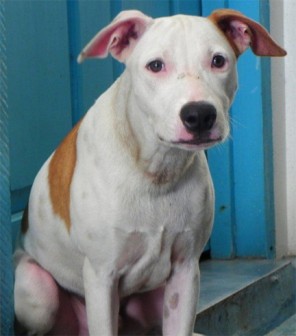Tick paralysis
The saliva of some species of tick contains poisons, which affect the motor nerves of the dog.
Clinical signs are usually associated with a heavy infection of ticks. During 48 to 72 hours the dog gets progressively weaker. There is no evidence of pain or an illness, other than lethargy.
At first, the reaction to a pin prick is normal, the animal moves its leg away from the pin prick. In time, the paralysis becomes so severe the dog can’t raise his head or move his legs. He may die because he cannot breathe.
Treatment
 Remove all ticks, especially engorged females. Bathe/spray the dog with an insecticide (acaricide = tick killing chemical) solution recommended by your vet. If your dog shows signs of weakness, trembling or walking “wobbly,” call your veterinarian immediately.
Remove all ticks, especially engorged females. Bathe/spray the dog with an insecticide (acaricide = tick killing chemical) solution recommended by your vet. If your dog shows signs of weakness, trembling or walking “wobbly,” call your veterinarian immediately.
Tick paralysis might easily be confused with other ailments such as Coon Hound paralysis, botulism, etc.
Botulism

Botulism is a paralysis caused by the endotoxin of the bacteria called Clostridium botulinum. It is acquired by eating improperly canned vegetables and meat, or spoiled carcasses. Signs are similar to tick paralysis.
Treatment
The disease is often fatal. Antitoxins are available; they may be of aid early in the disease.
Coon Hound (hunting dog) paralysis
There are not many Coon Hounds in Guyana. I only know of one Dutch family that breeds them and I have not seen them recently. But I’ll mention the ailment anyway.
The exact cause of this disease is unknown. It may be due to a virus. In North America, it is acquired by dogs who have hunted raccoons. In Guyana, raccoons are called ‘crab dogs.‘ The history of this particular ailment might reveal that the dog was bitten or scratched by a raccoon a week or two before the onset of his paralysis.
The disease begins as a weakness of the hindquarters and progresses forward until the dog is unable to stand. During this time the dog remains alert but concerned by his incapacity. The paralysis reaches its peak at about ten days. Dogs may recover.
Treatment is supportive. Seek veterinary aid.
Nerve palsy
An injury to one of the peripheral nerves results in loss of sensation and motor function in the distribution of that nerve. Common injuries are stretches, tears and lacerations.
Brachial and radial nerve palsies involve one of the front legs. Usually they are caused by a car accident, during which the leg is jerked backwards away from the trunk, which stretches the nerves. The leg hangs limp. When paralysis is partial, the dog may be able to stand, but stumbles when he takes a step. Lacerated nerves may be repaired. Stretched nerves often return to normal.
I think we have exhausted this theme of ailments of the nervous system. Next week we will begin with a new theme – perhaps the diseases of the muscles/bones.
Until then, please ensure that your pets are vaccinated and dewormed and are generally robust and happy.
Please implement disease preventative measures (vaccinations, routine dewormings, monthly anti-heartworm medication, etc) and adopt-a-pet from the GSPCA’s Animal Clinic and Shelter at Robb Street and Orange Walk, if you have the wherewithal to care well for the animals. Do not stray your unwanted pets, take them to the GSPCA’s Clinic and Shelter instead. If you do not wish your pet to have puppies or kittens, you may exploit the GSPCA’s free spay and neutering programme. If you see anyone being cruel to an animal, or if you need any technical information, please get in touch with the Clinic and Shelter by calling 226-4237.








